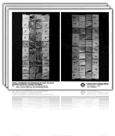We need your consent to use the individual data so that you can see information about your interests, among other things. Click "OK" to give your consent.
ASTM D5266-13(2020)
Standard Practice for Estimating the Percentage of Wood Failure in Adhesive Bonded Joints
Translate name
STANDARD published on 1.4.2020
The information about the standard:
Designation standards: ASTM D5266-13(2020)
Publication date standards: 1.4.2020
SKU: NS-991731
The number of pages: 8
Approximate weight : 24 g (0.05 lbs)
Country: American technical standard
Category: Technical standards ASTM
The category - similar standards:
Annotation of standard text ASTM D5266-13(2020) :
Keywords:
adhesives, finger joints, parallel laminates, plywood, wood failures,, ICS Number Code 83.180 (Adhesives)
These adjuncts apply to this standard:
Adjunct to D5266 Practice for Estimating the Percentage of Wood Failure in Adhesive Bonded Joints
Selected format:Show all technical information.
Additional information
| Significance and Use | ||||||||||||||||||||||||||
|
4.1 An estimate of wood failure is one of the principal means for determining the quality of an adhesively bonded wood joint. 4.2 When evaluated after a water soaking, water soaking and drying, or boiling and drying, the percentage of estimated wood failure is an important criterion for qualifying adhesives for use in plywood, laminated structural timber, adhesively bonded wood products and for daily quality control of the processes for manufacturing various adhesively bonded wood products including but not limited to plywood and laminated timbers. Standards that use the percentage of wood failure are included in Section 2. 4.3 In plywood manufactured from North American softwood species, the percentage of wood failure of Test Method D906 specimens, tested wet after either a vacuum-pressure soak-dry or boil-dry treatment, correlates with the percentage of panels that delaminate in outdoor exposure without protection.7 4.4 Similar correlations for other products have not been published. |
||||||||||||||||||||||||||
| 1. Scope | ||||||||||||||||||||||||||
|
1.1 This practice provides procedures for estimating the percentage of wood failure that occurs in plywood-shear, block-shear, finger joint test specimens, or any other bondline involving wood. 1.2 The values stated in SI units are to be regarded as the standard. The values in parentheses are provided for information only. 1.3 This standard does not purport to address all of the safety concerns, if any, associated with its use. It is the responsibility of the user of this standard to establish appropriate safety, health, and environmental practices and determine the applicability of regulatory limitations prior to use. 1.4 This international standard was developed in accordance with internationally recognized principles on standardization established in the Decision on Principles for the Development of International Standards, Guides and Recommendations issued by the World Trade Organization Technical Barriers to Trade (TBT) Committee. |
||||||||||||||||||||||||||
| 2. Referenced Documents | ||||||||||||||||||||||||||
|
We recommend:
Technical standards updating
Do you want to make sure you use only the valid technical standards?
We can offer you a solution which will provide you a monthly overview concerning the updating of standards which you use.
Would you like to know more? Look at this page.





 Cookies
Cookies
